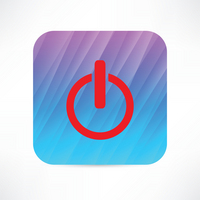Green computing is the environmentally responsible and eco-friendly use of computers and their resources. It is also known as Green Information Technology (Green IT). It aims to achieve economic viability and improve the way computing devices are used.
What can you do to make your business and home more energy efficient?
Shut Down and Switch Off
 While putting a computer into a “standby” or “sleep” mode will save a lot of power, many people remain unaware that even shutting down a desktop computer completely does not turn it off. This is because the computer’s power supply will remain physically switched on with the motherboard partially powered and waiting for a signal from the switch on the front of the PC (which is not a main power switch) to boot up again. To prevent a desktop computer from using power after being shut down, it must either be switched off at the wall outlet or turned off using the small rocker switch on the back of the power supply.
While putting a computer into a “standby” or “sleep” mode will save a lot of power, many people remain unaware that even shutting down a desktop computer completely does not turn it off. This is because the computer’s power supply will remain physically switched on with the motherboard partially powered and waiting for a signal from the switch on the front of the PC (which is not a main power switch) to boot up again. To prevent a desktop computer from using power after being shut down, it must either be switched off at the wall outlet or turned off using the small rocker switch on the back of the power supply.
A typical desktop computer uses about 8 Watts of electricity an hour when shut down but not switched off. That’s about 1 Kilowatts of electricity being wasted a week for a PC turned off around 16 hours a day. It therefore really is worth remembering that simply turning off a PC at the back or at the wall when not in use can have a major impact on energy consumption and its environmental impact.
Upgrade: Use Low Power Hardware
If you’re using an older computer, chances are that your energy costs are a lot higher than normal. With the improvement of technology, manufacturers have been able to produce more energy efficient components. An older Dell OptiPlex desktop purchased in 2003 typically had an Intel Pentium 4 processor, a hard drive that you could hear as it accessed data, and a bulky Cathode Ray Tube (CRT) monitor. At the time of its release, it was state of the art and quick, but by today’s standards, it is an ancient dinosaur.
 Technology is ever changing and these desktops can be easily replaced with faster, more energy efficient hardware. Using the Dell Optiplex as a base line, let’s compare it with today’s business desktops. Today, you will typically find an Intel Core-i3 processor, which runs faster and more efficient, saving you on average 35% on your energy costs. That old noisy hard disk drive (HDD) can be replaced with a Solid-State Drive (SSD). Since it has no moving parts, it is virtually silent, faster and draws less power (2 to 3 Watts vs. 6 to 7 Watts in a HDD).
Technology is ever changing and these desktops can be easily replaced with faster, more energy efficient hardware. Using the Dell Optiplex as a base line, let’s compare it with today’s business desktops. Today, you will typically find an Intel Core-i3 processor, which runs faster and more efficient, saving you on average 35% on your energy costs. That old noisy hard disk drive (HDD) can be replaced with a Solid-State Drive (SSD). Since it has no moving parts, it is virtually silent, faster and draws less power (2 to 3 Watts vs. 6 to 7 Watts in a HDD).
And last but not least, that 50 pound CRT monitor you have on your desk can be thrown out the window and replaced with a flat-screen (or LCD) monitor. Your typical 20 inch CRT monitor will consume about 90 to 100 Watts; a 20 inch LCD monitor on the other hand only consumes a fraction of that, between 24 to 26 Watts. On average you will spend $3.29/month or $39.42/year to power one CRT monitor. Or you can opt to power an LCD monitor for $0.88/month or $10.50/year.
Average computer users can employ the following general tactics to make their computing usage greener:
- Use “hibernate” or “sleep” modes when away from a computer for extended periods.
- Use flat-screen or LCD monitors instead of conventional cathode ray tube (CRT) monitors.
- Buy energy efficient notebook computers instead of desktop computers.
- Activate the power management features for controlling energy consumption.
- Turn off computers at the end of each day.
- Refill printer cartridges, rather than buy new ones.
- Instead of purchasing a new computer, consider upgrading your hardware components.
With all these factors in mind, doing these simple upgrades and having a “Green IT” policy in place can save you money over the long run. If you are interested in making these changes or for more information, please contact us at (734) 457-5000.
